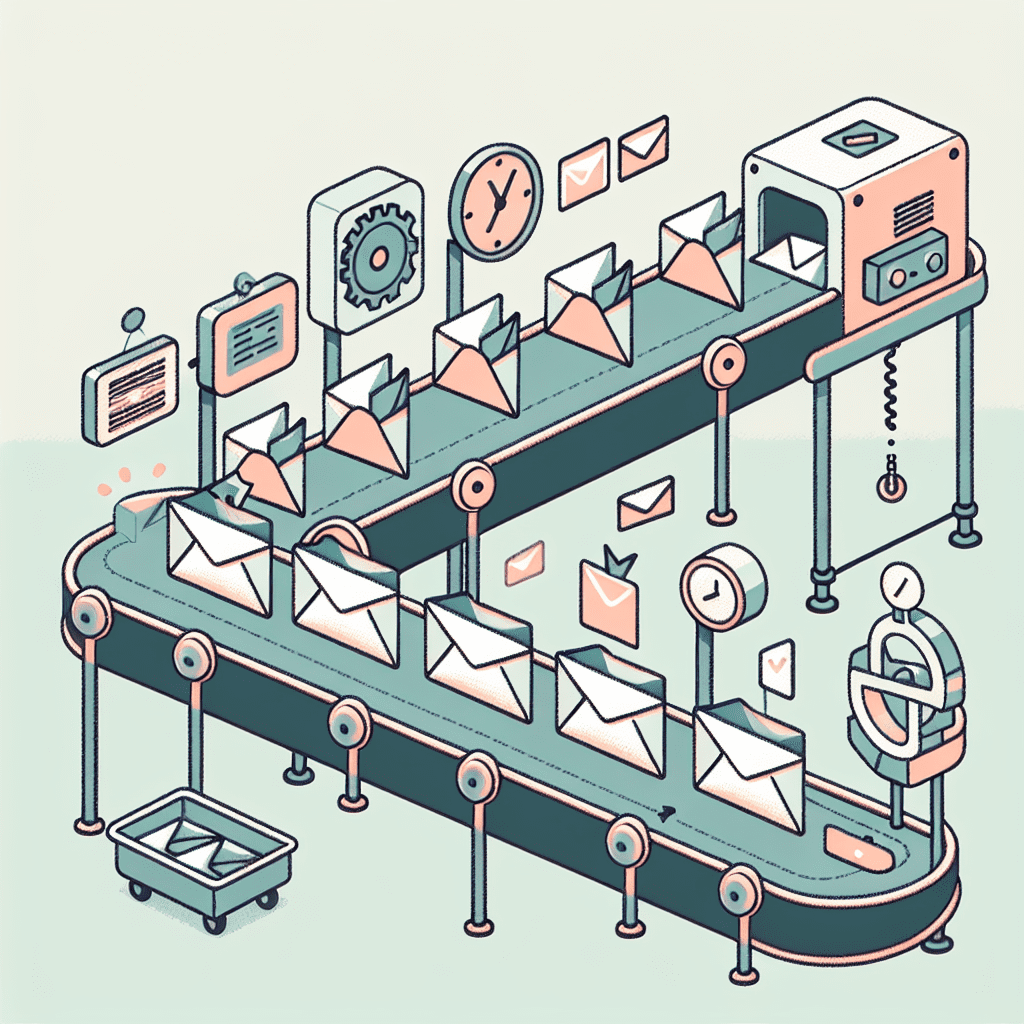Ever wish you could clone yourself just to keep up with emails? Yeah, same. But since we’re still waiting on that feature (looking at you, Elon), email automation is the next best thing. It’s like hiring a tireless, invisible assistant who never sleeps, never forgets, and always hits “send” right on time.
So, what exactly is email automation?
At its simplest, it’s software that sends emails for you based on certain triggers or behaviors. Someone signs up for your newsletter; boom, they get a welcome email. Someone abandons a cart; ping, here’s a nudge to finish checking out. The beauty is, once you set it up, it runs in the background. No more copying, pasting, or wondering if you remembered to follow up.
Let me explain how it actually works.
Everything starts with a workflow. Think of it like a
choose-your-own-adventure book, but with email. You define the rules: what action kicks things off, who qualifies, what happens next. The software handles the rest.
Say someone browses your “Winter Jackets” section but doesn’t buy. That behavior can trigger a series of emails; maybe a reminder, then a discount, then a gentle “Still shopping?” nudge. Tools like Mailchimp, HubSpot, Klaviyo, and ActiveCampaign make this pretty painless. They track behavior, segment your audience, and personalize content so your emails don’t feel robotic or, worse, irrelevant.
Let’s break down the nuts and bolts.
There are five key ingredients in a good email automation setup:
- Triggers: These are the events that start the whole thing. A form submission, a purchase, a birthday—anything that signals it’s time to send.
- Conditions: These narrow down who actually gets the email. Maybe only people in New York, or folks who’ve spent over $100.
- Actions: This is what the system does once the trigger and conditions are met. Typically, it sends an email, but it could also update a contact’s profile or ping your sales team.
- Segmentation: This is where things get smarter. You slice your audience into groups based on behavior, location, or engagement. That way, your messages hit the mark.
- Personalization: You’re not just adding names to subject lines. You’re showing people you get them—with relevant offers, smart timing, and content that speaks to their needs.
Why bother automating at all?
Because it saves you time, for starters. But it also does things humans just can’t do at scale. You can:
- Send the right message at the right time, without thinking about it.
- Nurture leads through the sales funnel automatically.
- Re-engage people who ghosted you, gently.
- Keep your brand top of mind without annoying anyone.
Basically, it lets you be everywhere at once, without actually being everywhere at once. Which is a neat trick.
Here’s where it really shines.
Let’s talk use cases. These are the real-world scenarios where email automation earns its keep:
- Welcome Series: Someone signs up? Send a warm hello, a quick intro, maybe a discount. Make them feel like they just joined something good.
- Abandoned Cart Recovery: This one’s a
no-brainer. Someone got cold feet at checkout? A well-timed reminder (maybe with free shipping) can bring them back. - Lead Nurturing: Not everyone’s ready to buy right away. Give them useful content over time. Educate, inform, win trust.
- Re-engagement Campaigns: Some subscribers go quiet. Doesn’t mean they’re gone for good. A clever campaign can wake them up.
- Post-Purchase Follow-ups: Say thanks. Ask for a review. Suggest something else they might like. Keep the conversation going.
AI is changing the game, too.
Artificial intelligence has started to take email automation from “smart” to “borderline psychic.” Tools like Salesforce Einstein and Mailchimp’s AI Content Generator can now predict the best time to send, suggest subject lines that are more likely to get clicks, and even recommend content blocks based on user behavior.
It’s like having a data scientist and a copywriter in your inbox, quietly doing their thing while you focus on bigger stuff.
But don’t forget the rules.
You can’t just blast people willy-nilly. Laws like GDPR and CAN-SPAM exist for a reason. You’ve got to get clear consent, make it easy to unsubscribe, and honor people’s preferences. Also, keeping your email list clean and your sender reputation solid helps you avoid the spam folder.
If your emails start landing in junk, it doesn’t matter how clever your subject line is. No one’s reading it.
So, what’s the takeaway?
Email automation isn’t just a tool for saving time. It’s how modern marketers stay personal at scale.
Set it up once, tweak it as you go, and let the system do the heavy lifting. Your future self will thank you.
That’s the breakdown.
We’ll be back with more.
Until then, keep building.
– Perfect Sites Blog

